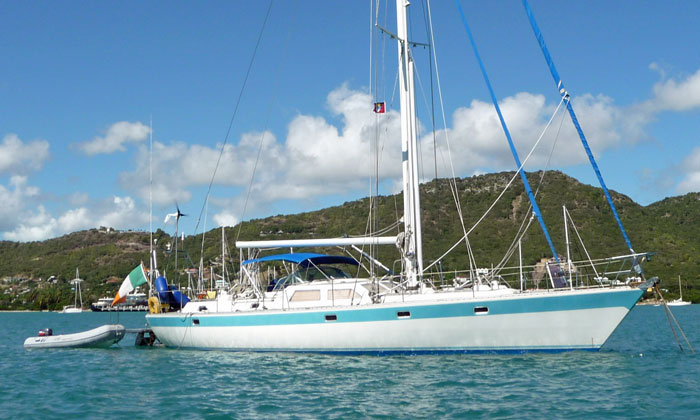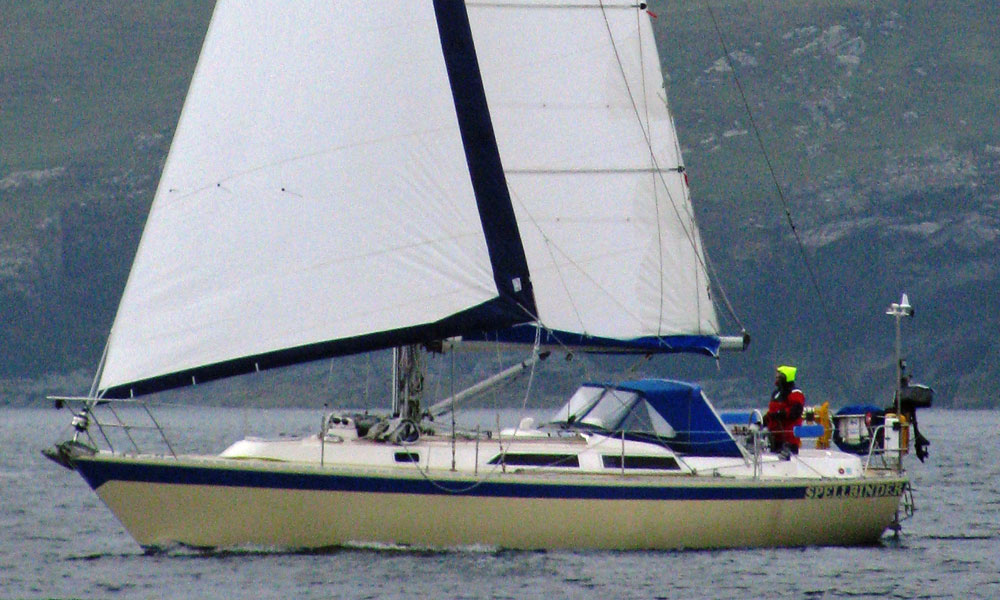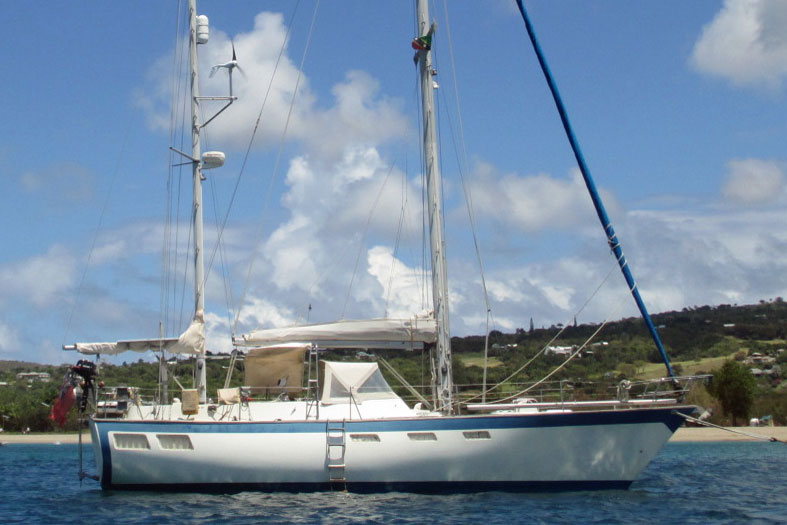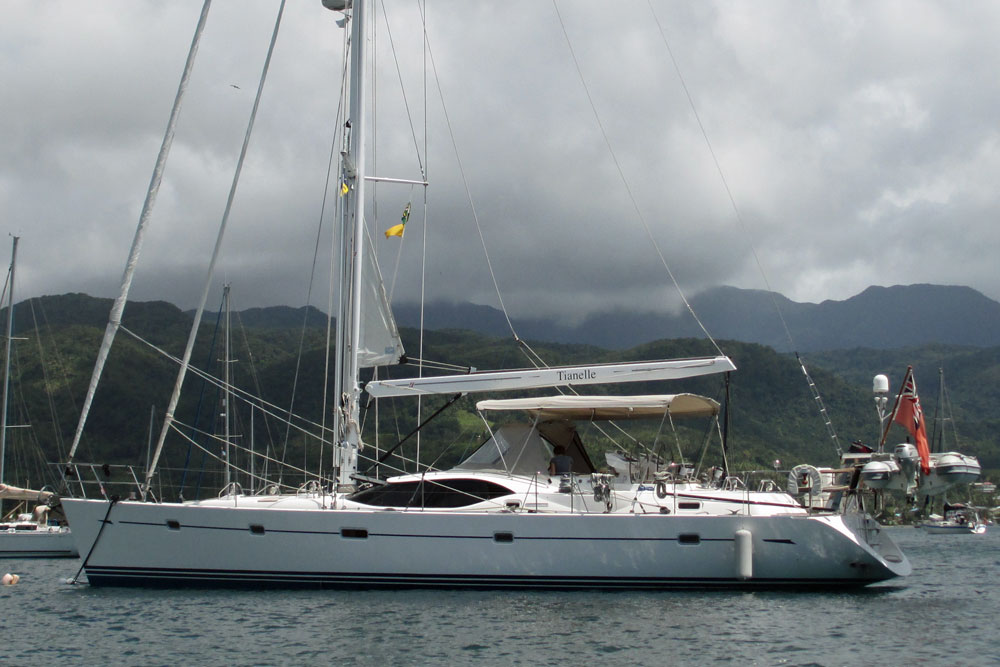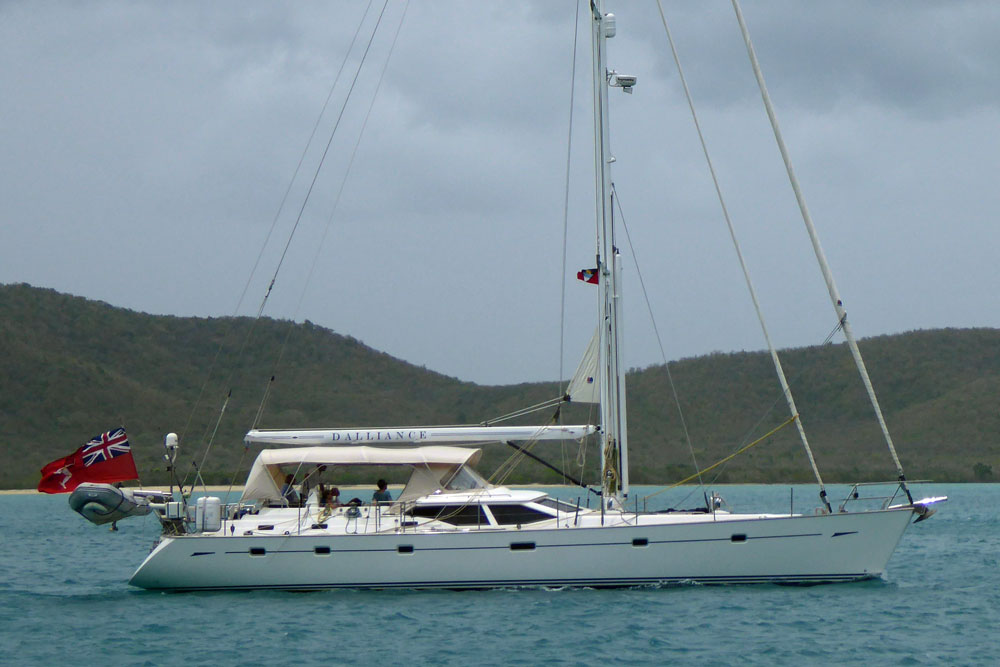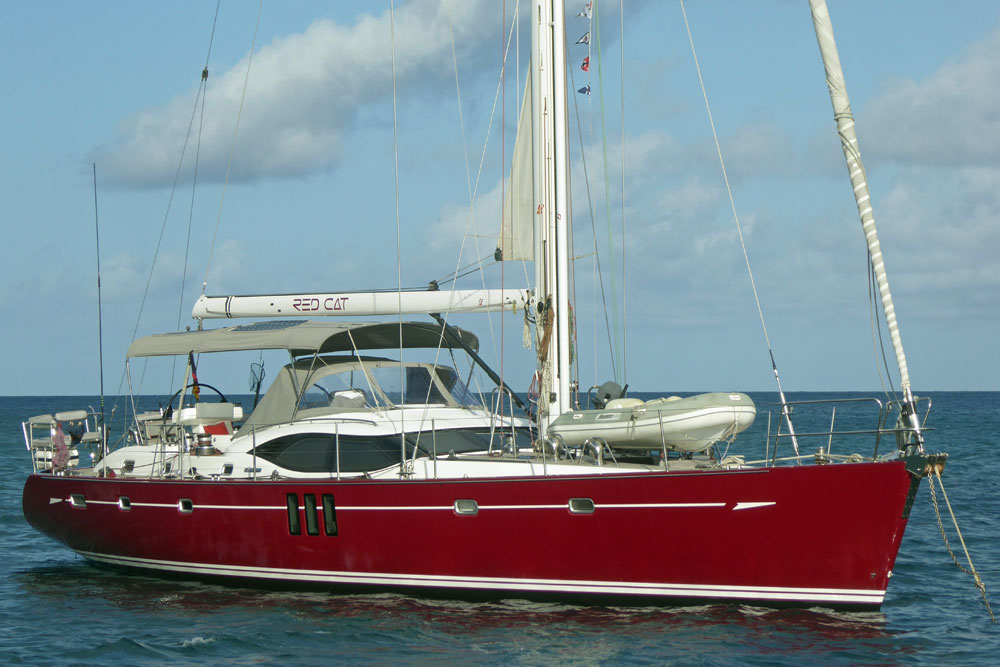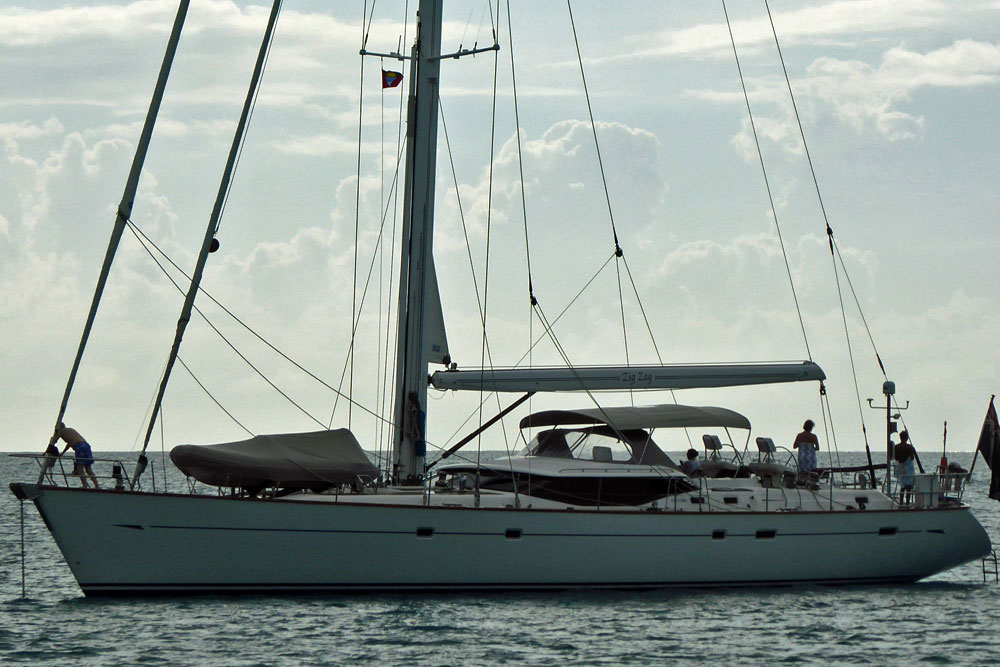- Home
- Sailboats 50'-55'
- Oyster 53
The Oyster 53 Sailboat
Specs & Key Performance Indicators
The Oyster 53, a centre-cockpit cutter, was designed by Holman & Pye and built in the UK by Oyster Marine Ltd.
Published Specification for the Oyster 53
Underwater Profile: Fin keel & skeg-hung rudder
Hull Material: GRP (Fibreglass)
Length Overall: 53'0" (16.2m)
Waterline Length: 44'8" (13.6m)
Beam: 15'9" (4.8m)
Draft: 7'0" (2.1m)
Rig Type: Cutter
Displacement: 40,800lb (18,507kg)
Designer: Holman & Pye
Builder: Oyster Marine Ltd (UK)
Year First Built: 1985
Owners Association: Oyster Owners
Published Design Ratios for the Oyster 53
1. Sail Area/Displacement Ratio: 16.8
- Less than 16 would be considered under-powered;
- 16 to 20 would indicate reasonably good performance;
- Over 20 suggests relatively high performance.
2. Ballast/Displacement Ratio: 40.4
- Under 40: less stiff, less powerful
- Over 40: stiffer, more powerful
3. Displacement/Length Ratio: 204
- Under 100: Ultralight
- 100 to 200: Light
- 200 to 275: Moderate
- 275 to 350: Heavy
- Over 350: Ultraheavy
4. Comfort Ratio: 34.0
- Under 20 indicates a lightweight racing boat
- 20 to 30 indicates a coastal cruiser
- 30 to 40 indicates a moderate offshore cruising boat
- 40 to 50 indicates a heavy offshore boat
- Over 50 indicates an extremely heavy offshore boat
5. Capsize Screening Formula: 1.8
- Under 2.0 (the lower the better): Better suited for ocean passages
- Over 2.0: Less suited for ocean passages
Summary Analysis of the Design Ratios for the Oyster 53
1. A Sail Area/Displacement Ratio of 16.8 suggests that the Oyster 53 will, in the right conditions, approach her maximum hull speed readily and satisfy the sailing performance expectations of most cruising sailors.
2. A Ballast/Displacement Ratio of 40.4 means that the Oyster 53 will stand up well to her canvas in a blow, helping her to power through the waves.
3. A Displacement/Length Ratio of 204, tells us the Oyster 53 is a moderate displacement cruiser, which means she'll carry all your cruising gear without it having a dramatic effect on her performance. Most of today's sailboats intended for offshore cruising fall into this displacement category.
4. Ted Brewer's Comfort Ratio of 34.0 suggests that crew comfort of an Oyster 53 in a seaway is similar to what you would associate with the motion of a moderate bluewater cruising boat - a predictable and acceptable motion for most seasoned sailors.
5. The Capsize Screening Formula (CSF) of 1.8 tells us that an Oyster 53 would be a safer choice of sailboat for an ocean passage than one with a CSF of more than 2.0.
The Oyster 53...
This remarkable Oyster Yachts heritage model, designed by Rob Humphreys and launched in 1999, has seen fifty-two units built until 2008. The Oyster 53 is the smallest Oyster sailboat that offers a four-cabin layout, making it perfect for families or groups of friends who desire to go sailing together. Let's explore this sailboat in more detail.
The Oyster 53 boasts a sleek and sophisticated profile, with a low-profile deck saloon that offers breathtaking panoramic views of the surroundings. The cockpit is generously spacious and well-protected, featuring a large folding table for al fresco dining. Depending on your preference, the cockpit can be either aft or center. The deck is easy to navigate, with wide side decks and a flush foredeck. The rig is powerful and efficient, equipped with a slab reefing mainsail or an optional in-mast or in-boom furling system. With a moderate draft of 2.4 m (7.87 ft), the Oyster 53 can access shallow anchorages.
Below deck, the Oyster 53 offers a luxurious and comfortable living space, with custom joinery and high-quality materials. The layout can vary, but typically includes four cabins: a master cabin aft with a double berth and an ensuite head, a guest cabin forward with a double berth and an ensuite head, and two twin cabins amidships that share a head. Alternatively, one of the twin cabins can be replaced by a single/workshop or a full workshop. The saloon is bright and spacious, featuring a large U-shaped settee and a dining table on the port side, and a smaller settee and a navigation station on the starboard side. The galley is located on the port side, aft of the saloon, and is fully equipped with a stove, oven, fridge, freezer, sink, and ample storage space.
The Oyster 53 is not only comfortable but also fast and seaworthy. Its well-balanced hull performs well in light winds as well as in heavier conditions, giving it a smooth and easy motion at sea, thanks to its long waterline length and moderate displacement. Designed for offshore and ocean sailing, it has a robust construction and excellent safety features. It is also easy to handle, with all lines led back to the cockpit and electric winches available as an option.
The above text was drafted by sailboat-cruising.com using GPT-4 (OpenAI’s large-scale language-generation model) as a research assistant to develop source material; we believe it to be accurate to the best of our knowledge.
Other sailboats in the Oyster range include:
Recent Articles
-
Albin Ballad Sailboat: Specs, Design, & Sailing Characteristics
Jul 09, 25 05:03 PM
Explore the Albin Ballad 30: detailed specs, design, sailing characteristics, and why this Swedish classic is a popular cruiser-racer. -
The Hinckley 48 Sailboat
Jul 09, 25 02:44 PM
Sailing characteristics & performance predictions, pics, specifications, dimensions and those all-important design ratios for the Hinckley 48 sailboat... -
The Hinckley Souwester 42 Sailboat
Jul 09, 25 02:05 PM
Sailing characteristics and performance predictions, pics, specifications, dimensions and those all-important design ratios for the Hinckley Souwester 42 sailboat...
